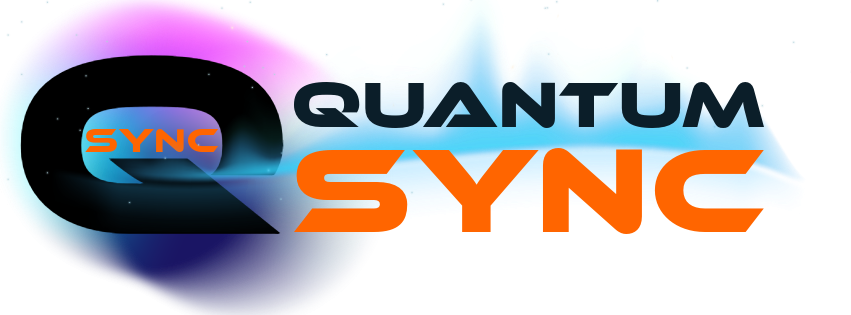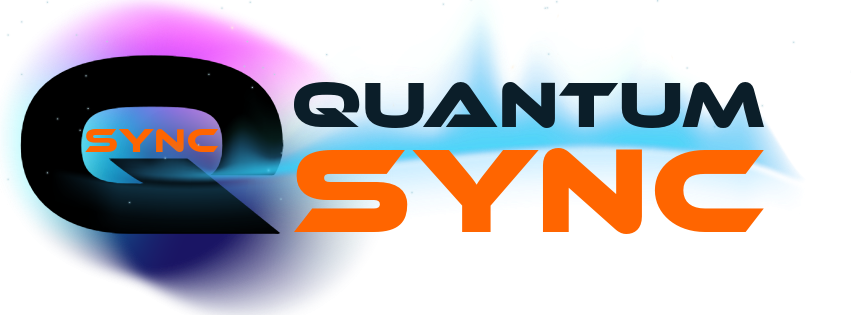How Digital Business Cards Fit into the Future of Smart Networking

Picture this: You're at a bustling conference, and someone asks for your business card. You reach into your pocket, pull out your phone, and with a simple tap, your entire professional profile transfers to their device. No fumbling through wallets, no crumpled paper cards, and certainly no "I just ran out" excuses.
Welcome to the future of networking—where digital business cards are revolutionizing how professionals connect, share information, and build meaningful relationships. As we navigate an increasingly connected world, these smart tools are quickly becoming essential for anyone serious about modern professional networking. Let's explore how this technology is reshaping business interactions and why you should care.
The Evolution from Paper to Pixels
Traditional business cards have been networking staples for centuries, but they're showing their age in our digital-first world. The average professional receives dozens of paper cards at events, only to watch them gather dust in a drawer or, worse, end up in the trash. Studies suggest that approximately 88% of traditional business cards get thrown away within a week of exchange.
Digital business cards emerged as the natural solution to this problem. These virtual alternatives store contact information, social media profiles, portfolio links, and other professional details in shareable digital formats. Unlike their paper predecessors, they can be updated instantly, shared without physical presence, and integrated directly into contact management systems. The shift represents more than convenience—it's a fundamental reimagining of how professionals should connect in the 21st century.
What Makes Digital Business Cards "Smart"
Smart networking tools go beyond simple contact sharing. Modern digital business cards incorporate interactive elements, real-time updates, and intelligent features that traditional cards could never offer. They might include embedded videos introducing yourself, clickable links to your latest projects, or live social media feeds showcasing your professional achievements.
These cards leverage technologies like NFC (Near Field Communication), QR codes, and cloud-based platforms to create seamless sharing experiences. When someone scans your digital card, they're not just getting your phone number—they're accessing a dynamic professional profile that evolves as your career progresses. The intelligence lies in the connectivity, the analytics that track engagement, and the automation that helps you follow up efficiently with new connections.
Environmental Impact and Sustainability Concerns
The environmental argument for digital business cards is compelling. The business card printing industry produces billions of paper cards annually, contributing significantly to deforestation and waste. Most paper cards contain plastic coatings or metallic finishes that complicate recycling efforts, meaning they often end up in landfills.
Digital alternatives eliminate this waste entirely. Companies embracing digital networking solutions report reducing their carbon footprint while simultaneously improving their brand image among environmentally conscious clients and partners. For organizations committed to sustainability goals, transitioning to digital cards represents an easy win—a practical change that demonstrates environmental responsibility without sacrificing professional standards. As Gen Z and millennial professionals increasingly prioritize working with sustainable companies, this shift becomes not just ethical but strategic.
Cost-Effectiveness and Resource Management
Traditional business cards require ongoing investment. Every job change, phone number update, or design refresh means ordering new batches and disposing of outdated ones. For growing businesses or professionals who frequently update their information, these costs add up quickly.
Digital business cards operate on subscription models or one-time purchases that typically cost less than regular paper card replenishment. More importantly, they eliminate waste from outdated information. When you change roles or update your contact details, you simply edit your digital profile once—everyone with access to your card automatically sees the current information. This efficiency extends beyond cost savings to time management, allowing professionals to focus on building relationships rather than managing card inventories.
Seamless Integration with CRM Systems
One of digital business cards' most powerful advantages is their ability to integrate directly with Customer Relationship Management (CRM) platforms and contact management systems. When you exchange digital cards, the information flows automatically into your existing workflows, eliminating manual data entry that's both time-consuming and error-prone.
This integration transforms networking from a collection activity into an actionable database. Your new contacts can automatically enter your email marketing sequences, get tagged based on where you met them, or trigger follow-up reminders. For sales professionals, this means every conversation at a networking event can seamlessly become part of their pipeline. The technology doesn't just store information—it activates it, turning casual encounters into structured opportunities for relationship building and business development.
Enhanced Analytics and Networking Insights
Digital business cards provide something their paper counterparts never could: data. When someone views your digital card, clicks a link, or saves your contact information, that generates actionable insights. You can see who's engaging with your profile, which elements attract the most attention, and how your networking efforts translate into meaningful connections.
These analytics help professionals refine their networking strategies. If your portfolio link gets clicked frequently but your LinkedIn profile doesn't, that tells you something about what your audience values. If certain contacts repeatedly view your information, they might be especially interested in collaboration. This intelligence transforms networking from intuition-based activity into data-informed strategy, helping you invest time and energy where it matters most.
Accessibility and Global Reach
Digital business cards break down geographical barriers in ways physical cards never could. You can share your professional information with someone across the globe as easily as with someone across the table. This matters increasingly as remote work, international collaboration, and global business opportunities become standard rather than exceptional.
The accessibility extends to people with disabilities as well. Digital cards can be designed with screen readers in mind, include voice descriptions, or offer adjustable text sizes—accommodations that traditional cards can't provide. This inclusivity ensures that networking opportunities remain open to everyone, regardless of their physical abilities or location. As businesses prioritize diversity and accessibility, these features become essential rather than optional.
Security and Privacy Considerations
With digital information sharing comes legitimate security concerns. Digital business card platforms address these through various privacy controls that let users decide exactly what information to share and with whom. You might share full contact details with a close business partner but limit a casual acquaintance to just your email and LinkedIn profile.
Advanced platforms incorporate encryption, secure data storage, and compliance with privacy regulations like GDPR and CCPA. Many allow you to revoke access to your information if needed, or track who has your details. This control represents a significant advantage over paper cards, where information, once shared, becomes permanently accessible without your oversight. The best digital solutions balance convenience with security, ensuring your professional information remains both accessible and protected.
Customization and Brand Consistency
Digital business cards offer unlimited creative possibilities that paper cards can't match. You can incorporate your brand colors, animated logos, custom fonts, and interactive elements that reflect your personality and professional identity. The design can evolve as your brand develops, without printing costs or distribution challenges.
This customization extends to functionality too. Freelancers might emphasize their portfolio links, while corporate executives might highlight their company information and leadership team. Sales professionals can include product videos or testimonials, while consultants might feature case studies or white papers. The flexibility ensures your digital card serves your specific networking goals rather than conforming to traditional card limitations. Your professional identity deserves more than 3.5 by 2 inches of cardstock can provide.
The Role of QR Codes and NFC Technology
QR codes have experienced a renaissance, largely due to smartphone camera improvements and pandemic-era contactless preferences. Modern digital business cards leverage QR codes as instant gateways to comprehensive professional profiles. A quick scan delivers far more information than any paper card could hold, creating impressive first impressions.
NFC technology takes this convenience further. With NFC-enabled digital cards, you simply tap your phone or NFC card against another device to transfer information instantly. This technology feels futuristic yet familiar—similar to contactless payments most people already use daily. The combination of QR codes and NFC creates multiple sharing pathways, ensuring compatibility across different devices and user preferences while maintaining the seamless experience that defines smart networking.
Social Media Integration and Digital Presence
Today's professionals maintain presence across multiple platforms—LinkedIn, Twitter, Instagram, personal websites, and industry-specific networks. Digital business cards unify this scattered digital footprint into a single, shareable hub. Instead of verbally listing your various profiles or expecting people to search for you, you provide one access point that connects to everything.
This integration goes both ways. Many digital card platforms can pull current information from your social profiles, automatically updating your card when you change your LinkedIn headline or post new portfolio pieces. This synchronization ensures consistency across your digital presence while reducing the maintenance burden. Your network always sees your most current, complete professional identity rather than a snapshot from whenever you last ordered paper cards.
Adoption Across Industries and Demographics
Digital business cards are gaining traction across diverse sectors, though adoption rates vary. Tech companies and startups embraced them early, seeing natural alignment with their innovative brands. Real estate professionals, who network extensively and frequently update listings, have become enthusiastic adopters. Sales teams appreciate the analytics and CRM integration that support their metrics-driven cultures.
Generational differences influence adoption too. Younger professionals who grew up with smartphones find digital cards intuitive and expected. However, older generations are increasingly recognizing the advantages, especially when platforms offer user-friendly interfaces. The key to widespread adoption isn't just better technology—it's demonstrating clear value that transcends age, industry, or technical comfort level. As networking events increasingly occur in hybrid or virtual formats, digital cards become practical necessities rather than trendy alternatives.
Challenges and Barriers to Widespread Adoption
Despite obvious advantages, digital business cards face adoption hurdles. Many professionals worry about technical failures—what happens when your phone dies at a crucial networking moment? Others feel attached to the tangible ritual of exchanging physical cards, viewing it as more personal or memorable.
There's also the compatibility question. Not everyone has smartphones with NFC capabilities, and some people remain unfamiliar with QR code scanning. This creates awkward moments when your preferred sharing method doesn't match your contact's capabilities. Additionally, some industries maintain conservative cultures where traditional practices hold strong, making early adopters feel out of step. Overcoming these barriers requires not just better technology but also cultural shifts in how we perceive professional networking and relationship building.
The Hybrid Approach: Bridging Old and New
Many professionals are adopting hybrid strategies that combine traditional and digital approaches. They might carry a few paper cards for situations where digital sharing feels inappropriate or impossible, while primarily relying on digital solutions. Some companies print minimalist paper cards featuring just a QR code that links to the full digital profile.
This transition period allows people to move at their own pace while maintaining networking effectiveness. The hybrid approach acknowledges that different contexts and audiences require different tools. A formal business dinner with senior executives might call for traditional cards, while a tech startup event demands digital solutions. Smart networkers adapt their methods to their audience and environment rather than rigidly adhering to one approach.
Future Innovations in Digital Networking
The evolution of digital business cards is accelerating. Emerging technologies promise even more sophisticated networking tools. Augmented reality cards might project 3D holographic information when scanned. AI-powered networking assistants could analyze conversations and suggest relevant connections or follow-up actions.
Blockchain technology might verify credentials and professional claims embedded in digital cards, adding trust layers to networking. Integration with virtual reality platforms could enable networking in immersive digital environments where exchanging information feels as natural as physical interactions. Wearable technology might eliminate phones entirely, allowing information exchange through smartwatches or AR glasses. These innovations suggest that today's digital business cards represent just the beginning of a profound transformation in professional networking.
Making the Switch: Practical Considerations
If you're considering transitioning to digital business cards, start by evaluating your networking needs and typical environments. Choose a platform that aligns with how you actually network—if you attend many in-person events, prioritize solutions with robust QR and NFC options. If you network primarily online, focus on platforms with strong social media integration.
Test your chosen solution before fully committing. Share your digital card with friends or colleagues and gather feedback on the user experience. Ensure it works across different devices and represents your brand appropriately. Consider maintaining some traditional cards during the transition, creating a safety net while you build confidence with digital alternatives. The switch doesn't need to be instantaneous—thoughtful, gradual adoption often proves more effective than dramatic overnight changes.
Building a Smart Networking Strategy
Digital business cards work best as part of a comprehensive networking strategy rather than as standalone tools. Think about how they complement your other professional activities—your LinkedIn presence, your email communication style, your follow-up practices, and your relationship maintenance efforts.
Create systems around your digital cards. When you share your information, immediately add context about where you met and what you discussed. Set reminders to follow up within specific timeframes. Use the analytics your digital card provides to prioritize which connections deserve more attention. Smart networking isn't just about collecting contacts—it's about cultivating meaningful professional relationships. Digital tools should enhance this cultivation process, making it more intentional, organized, and effective rather than replacing the human elements that make networking valuable.
Frequently Asked Questions
Are digital business cards really replacing traditional paper cards?
Digital business cards are increasingly popular but aren't completely replacing paper cards yet. Many professionals use both, choosing based on context and audience. However, the trend clearly favors digital solutions, especially among younger professionals and tech-forward industries. As technology improves and becomes more accessible, we'll likely see continued migration toward digital options, though traditional cards may remain relevant for specific situations and demographics.
How much do digital business cards typically cost?
Pricing varies widely depending on features and platforms. Basic digital card solutions might be free or cost $5-10 monthly, while professional platforms with advanced analytics, CRM integration, and customization options range from $10-50 monthly. Some services offer one-time purchases. Compared to regularly printing paper cards, especially if you update information frequently, digital options generally prove more cost-effective over time.
What happens if someone doesn't have a smartphone?
Most digital business card platforms offer backup options. You can email your card information, send it via text message, or even print QR codes on paper cards as a bridge solution. Some platforms provide web links that work on any internet-connected device. While smartphones offer the best experience, thoughtful platforms ensure accessibility across various technologies and comfort levels.
Can I customize my digital business card to match my brand?
Absolutely. Most platforms offer extensive customization including colors, logos, fonts, layouts, and interactive elements. Premium services provide even more design flexibility, allowing you to create cards that perfectly align with your visual identity. This customization exceeds what's practical with traditional cards and can be updated anytime without reprinting costs.
Are digital business cards secure and private?
Reputable digital business card platforms implement strong security measures including encryption and secure data storage. Most allow you to control exactly what information you share and with whom. You can typically revoke access if needed and track who has viewed your information. These controls actually provide more privacy protection than paper cards, where shared information becomes permanently accessible without your oversight.
How do I share my digital business card at networking events?
Sharing methods include QR codes (the other person scans with their phone camera), NFC taps (touching phones together), text messages, emails, or direct links through messaging apps. Most platforms support multiple sharing methods, so you can choose what feels natural for each situation. The process typically takes just seconds, often faster than exchanging traditional cards, and ensures immediate, accurate information transfer.
- Creative Multimedia
- Education & Innovation
- Business & Technology
- Sustainability & Ethics
- App & IT Development
- Community & Culture
- Thought Leadership
- Event
- AI & Robotics
- Craft
- Movie
- Fitness
- Free Peck
- Game
- Tutorial
- Health
- Music
- Networking
- Other
- Business
- Religion
- Shop
- Sport
- Wellbeing



